Photographs: Raj Patidar/Reuters Sushmi Dey in New Delhi
Indian drug makers may have to revamp their strategies to maintain their grip on the world’s largest pharmaceutical market -- the United States.
The recent changes in the American law on generic drugs, many of which are reflected in the functioning of the US Food and Drug Administration, or USFDA, are likely to impact Indian pharmaceutical companies which clock 40-60 per cent of their consolidated revenues through exports to that country.
The patent laws, changed last year to the first-to-file or FTF system, awards patents to companies that are first to file for protection of a new product rather than to the company that first invents a product.
. . .
The image is used for representational purpose only
Policy tweaks in US shift Indian pharma's focus
Image: So far, Indian pharmaceutical companies have focused on blockbuster medicines.Photographs: Reuters
An FTF status also allows the company to enjoy the right to 180 days of exclusive sale in the US.
So far, Indian pharmaceutical companies have focused on blockbuster medicines that are expected to go off-patent in the near future.
Their aim has been not only to develop generic versions of such medicines, but also to win FTF for these and cash in on 180 days of monopolistic sale.
However, now, with the Generic Drug User Fee Act in place, USFDA is looking at gradually reducing the time taken in evaluation of applications seeking approval to sell the generic version of an off-patent drug.
As a result, more drugs are entering the market at the same time.
. . .
The image is used for representational purpose only
Policy tweaks in US shift Indian pharma's focus
Image: Of late, the regulator has been granting 180 days of exclusive marketing rights to more than one company.Photographs: Reuters
While this is directly impacting the market share of companies, it is also seen as a threat to the exclusive marketing rights for off patent drugs.
New players on the block
Of late, the regulator has been granting 180 days of exclusive marketing rights to more than one company.
In effect, this dilutes the advantage of FTF while allowing increased competition.
“As it is, once the drug goes off patent, there is price erosion and the market value declines significantly with the entry of the generics.
“With multiple FTFs, there is further disintegration of the market share and an increase in competition,” an industry official explains.
For example, in December last year, as many as six companies received the nod of USFDA to launch the generic version of Eli Lilly’s anti-depressant Cymbalta in the US.
. . .
The image is used for representational purpose only
Policy tweaks in US shift Indian pharma's focus
Photographs: Reuters
The regulator also allowed all six of them to share the 180 days of exclusive marketing rights for the medicine.
Of these, five were leading Indian companies -- Aurobindo Pharma, Dr Reddy’s Labs, Lupin, Sun Pharma and Torrent.
The sixth was Israel’s Teva.
According to industry experts, Cymbalta had annual US sales of $5.43 billion and was one of the largest selling products globally before going off-patent.
However, analysts estimate that once the generic version of the drugs reached the market, sales slipped to $120-180 million.
. . .
The image is used for representational purpose only
Policy tweaks in US shift Indian pharma's focus
Photographs: Reuters
Similarly, the regulator had simultaneously cleared the applications of various companies such as Dr Reddy’s Labs, Sun Pharma and Aurobindo Pharma for their generic version of Sanofi Aventis’ Plavix tablets, which commanded annual sales of around $6.74 billion in the US before its patent expiry.
Dr Reddy’s and Teva also received concurrent approval for launching generic version of Zyprexa with exclusive marketing rights at the same time.
However, the respective strengths varied for the companies.
For drug makers such as Dr Reddy’s Labs, Ranbaxy, Sun Pharma, Aurobindo and many others, the FTF status has so far been their main growth drivers, as it has been for many non-Indian companies like Mylan, Teva, Sandoz and Watson.
. . .
The image is used for representational purpose only
Policy tweaks in US shift Indian pharma's focus
Image: Granting joint FTFs is not a recent phenomenon or a change in the USFDA's policy.Photographs: Reuters
“With USFDA’s fast track mechanism and processes, the number of approvals is rising tremendously.
“This has been instrumental in lowering drug prices and hence the erosion of opportunity for major generic players, mainly those eyeing the exclusivity period,” says Praful Bohra, senior pharma analyst for investment firm Nirmal Bang.
However, Bohra feels that granting joint FTFs is not a recent phenomenon or a change in the USFDA’s policy.
“Earlier too the agency used to grant FTF to more than one company.
“But certainly the frequency has increased. Moreover, overall time of evaluation has reduced allowing faster entry of pharmaceutical products in the market,” he says.
. . .
The image is used for representational purpose only
Policy tweaks in US shift Indian pharma's focus
Image: Several big players like Dr Reddy's Labs, Sun Pharma, Lupin, Ranbaxy and Glenmark have already started focusing on differentiated or complex and difficult-to-make generic medicines.Photographs: Reuters
In search of growth
According to an executive, domestic pharmaceutical companies are evaluating other routes and strategies to maintain growth in the absence of a windfall from the 180-day market exclusivity.
Several big players like Dr Reddy’s Labs, Sun Pharma, Lupin, Ranbaxy and Glenmark have already started focusing on differentiated or complex and difficult-to-make generic medicines.
This includes therapeutic segment such as dermatology and oral contraceptives.
“These are areas where competition is less intense.
“While, it is difficult to develop products, the margins are high,” explains a Glenmark official.
. . .
The image is used for representational purpose only
Policy tweaks in US shift Indian pharma's focus
Image: Apart from devising new strategies for the American market, many drug makers are now exploring emerging markets for the next level of growth, even as the US continues to be their strongest turf.Photographs: Reuters
So, while there are fewer players in this segment, the approval rate is also lower because of the complexity involved.
Companies are also trying their hands at injectibles and biosimilars (versions of medical products that use derivates from living organisms as the active agent) as these are emerging areas with high growth potential.
However, developed markets like the US are yet to allow generic version of biotech products.
Apart from devising new strategies for the American market, many drug makers are now exploring emerging markets for the next level of growth, even as the US continues to be their strongest turf.
. . .
The image is used for representational purpose only
Policy tweaks in US shift Indian pharma's focus
Image: Under the new generic drug law in the US, the regulator will gradually move to a 10-month review clock to decide on the validity of a patent by 2017 in place of the current three years.Photographs: Reuters
India, the biggest foreign supplier of generic medicines to the US, accounts for over 40 per cent of the total generic medicines and over-the-counter products sold there.
“I think the market has grown to expect high growth from Indian companies,” says Nilesh Gupta, managing director, Lupin.
“While it’s up to each company to set its strategy, I believe the focus should be on high growth markets, complex products, ensuring manufacturing excellence and focusing on quality and compliance.”
Under the new generic drug law in the US, the regulator will gradually move to a 10-month review clock to decide on the validity of a patent by 2017 in place of the current three years.
. . .
The image is used for representational purpose only
Policy tweaks in US shift Indian pharma's focus
Image: According to a survey by America's National Community Pharmacists Association, prices of some of the medicines spiked more than 1,000 per cent in 2013.Photographs: Reuters
This move will likely increase the spread of generic medicines.
It comes in the wake of heightened focus on the Patient Protection and Affordable Care Act, popularly called Obamacare, which aims to lower healthcare spending in America.
International reports suggest prices of medicines, including those of generics, have risen significantly in the past year.
According to a survey by America’s National Community Pharmacists Association, prices of some of the medicines spiked more than 1,000 per cent in 2013.
Increasing the presence of generics could lower prices.
In numbers
- 40% Share of Indian companies in the American generic drug and OTC product market
- $30 billion Worth of the US generic drug market
- 15-20 Number of abbreviated new drug applications filed by leading Indian firms in the US
- 5-10 AND filed in the US every year by smaller Indian firms
The image is used for representational purpose only

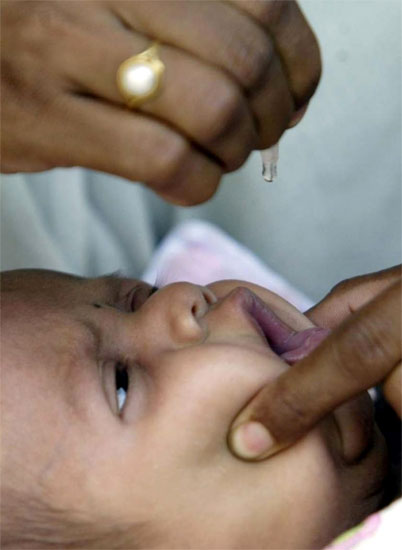
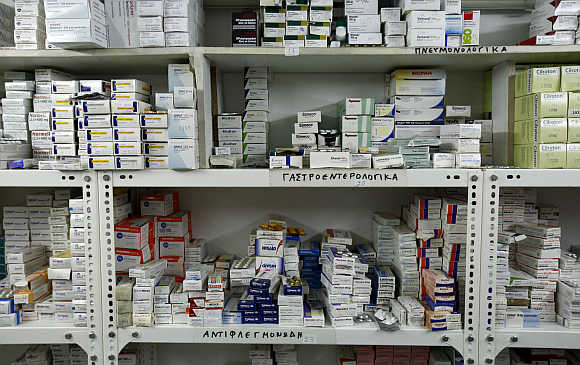
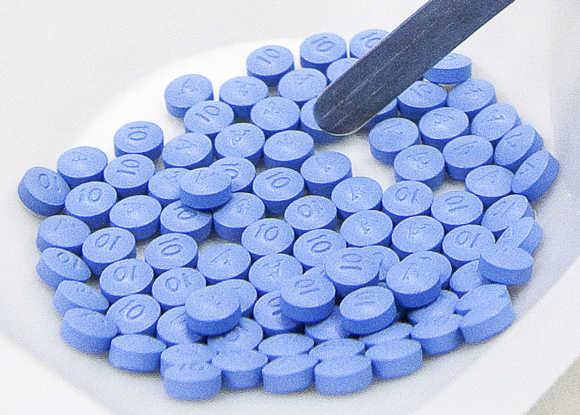
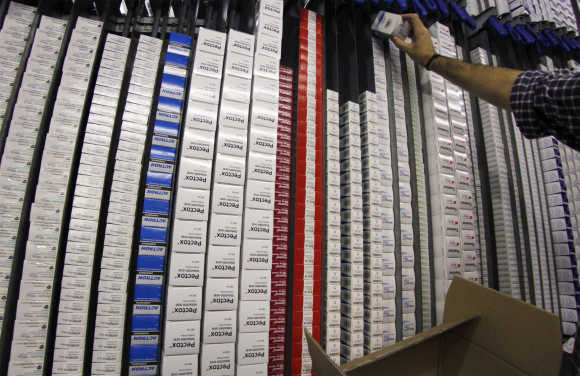
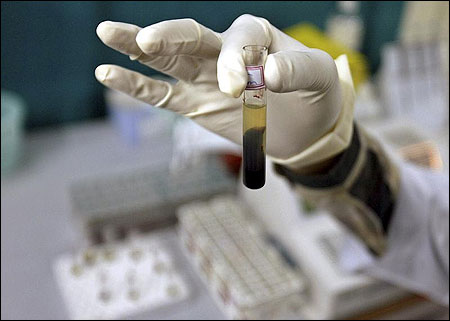

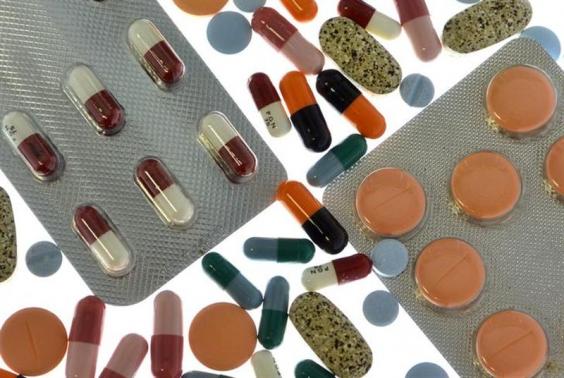
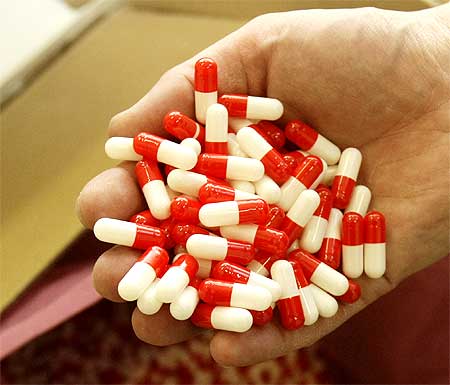
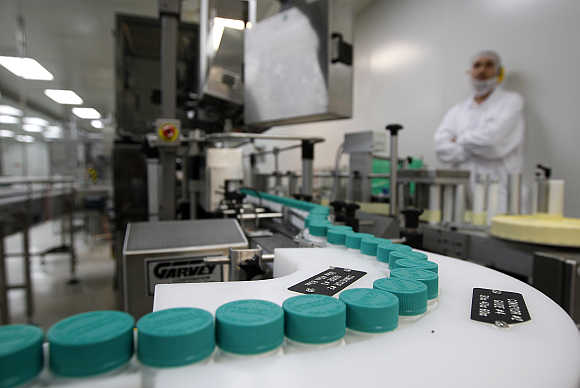
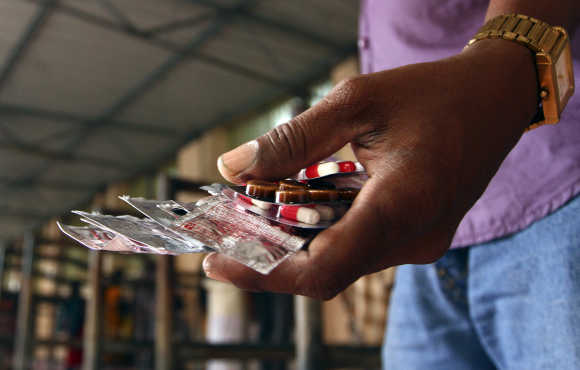

article